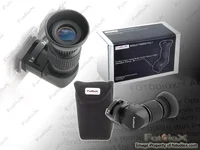smo0f said:
35mm...as in the cameras that use film rolls..
Film...oh, rolls of plastic coated with chemicals film. Got it. [/sarcasm]
Taking pictures with film is like a computer without a GUI; a car without electric start; a TV without a remote; a roof covered in sod...
There are many instances where humans used to do X with technology Y, such as in the above examples. Digital is just a better way of doing photography, not something other then traditional photography. Many people who disagree with this think that photography is inherantly different when using digital versus film; they believe something is lost when you go digital. And just as in the above examples, you can see that this is not true. The fact is, a digital camera does everything a film camera does and in the exact same way (especially true when working with RAW workflow). Images still need to be processed (removed from the camera) and transfered to a printer. During that transfer adjustments are made (yes, 1-hour photo labs use machines that make adjustments to every print to enhance levels and color and even cropping). Then printing of the image occurs and images are stored in boxes or albums for everyone to see (or not). See, the process is the same.
Since RAW images are really just the pure output of the sensor (in the same way a negative is the pure output of a film camera) the user has to process further the image in order to print it. With digital the user downloads the images onto a compter; processes according to the environment while shooting using level, curves, tone and WB controls. This is the same way a film photographer might cross-process film or otherwise adjust the developement of the negative in order to achive the desired result. Finally the images are sorted (or not) and prints are made. During this step (known as enlargement for film) further cropping and adjusting using filters, burning, doging, selective focus, and other techniques (all the same for film) is carried out. Final converting to JPEG (developing) takes place and the image is in its final form.
So, the world of photography hasn't changed, its just evolved. None of the other advancements mentioned above fundimentaly changed the item in question. Rather, they improved or enhanced the user experience. In some cases broadening the items capapbility, while in others simply changing the procedure for use. Photography has undergone the same evolution, but stayed pretty much the same.
FWIW, photography programs that still use film do it becuase it intrinsically requires more thought, focus, and study to make an image. The slower pace of the process helps students get familiar without having too many concepts go speeding by. I really don't think they use film because its "better."


















